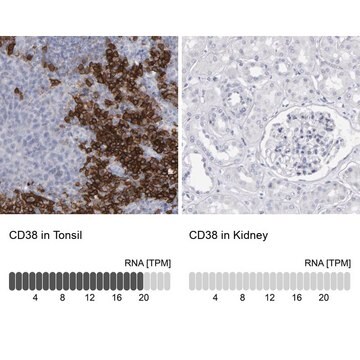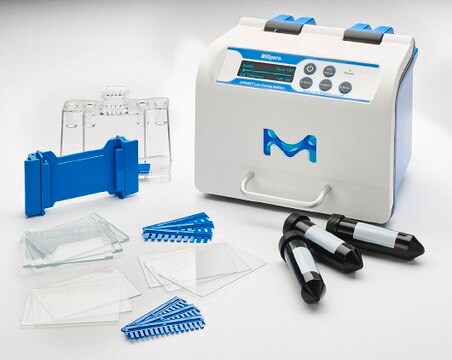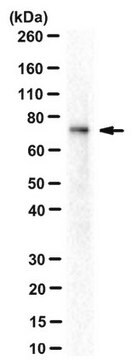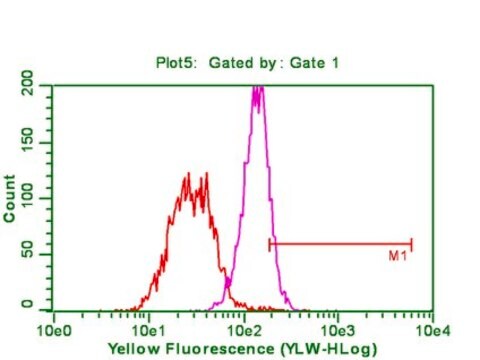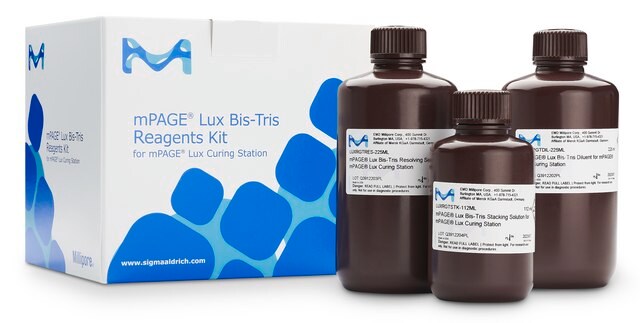SAB4700170
Monoclonal Anti-CD38 antibody produced in mouse
clone HIT2, purified immunoglobulin, buffered aqueous solution
Sign Into View Organizational & Contract Pricing
All Photos(1)
About This Item
UNSPSC Code:
12352203
NACRES:
NA.41
Recommended Products
biological source
mouse
Quality Level
conjugate
unconjugated
antibody form
purified immunoglobulin
antibody product type
primary antibodies
clone
HIT2, monoclonal
form
buffered aqueous solution
species reactivity
human
concentration
1 mg/mL
technique(s)
flow cytometry: suitable
isotype
IgG1
NCBI accession no.
UniProt accession no.
shipped in
wet ice
storage temp.
2-8°C
target post-translational modification
unmodified
Gene Information
human ... CD38(952)
General description
The antibody HIT2 reacts with CD38 (T10), a 45 kDa type II transmembrane glycoprotein strongly expressed mainly on plasma cells and activated T and B lymphocytes; it is an antigenic marker of lymphoid cells.
Immunogen
Human thymocytes in foetus
Application
The reagent is designed for Flow Cytometry analysis. Suggested working dilution for Flow Cytometry is 2-8 μg/mL of sample. Indicated dilution is recommended starting point for use of this product. Working concentrations should be determined by the investigator.
Biochem/physiol Actions
Cluster of differentiation 38 (CD38) controls the release of oxytocin hormone that regulates social cognition and affiliative behaviors. CD38 serves as a receptor, an ectoenzyme and acts as a highly conserved calcium-signaling molecule while functioning as a secondary messenger. The generation of cyclic Adenosine diphosphate-ribose and nicotinic acid adenine dinucleotide phosphate from NAD+ and NAD phosphate by ADP-ribosyl cyclase is catalyzed by CD38. The formation of adenosine is an important function of CD38. The pleiotropic nucleoside adenosine formed, acts as a regulator of immune functions and inflammation process.
Features and Benefits
Evaluate our antibodies with complete peace of mind. If the antibody does not perform in your application, we will issue a full credit or replacement antibody. Learn more.
Physical form
Solution in phosphate buffered saline, pH 7.4, with 15 mM sodium azide.
Disclaimer
Unless otherwise stated in our catalog or other company documentation accompanying the product(s), our products are intended for research use only and are not to be used for any other purpose, which includes but is not limited to, unauthorized commercial uses, in vitro diagnostic uses, ex vivo or in vivo therapeutic uses or any type of consumption or application to humans or animals.
Not finding the right product?
Try our Product Selector Tool.
Storage Class Code
10 - Combustible liquids
Flash Point(F)
Not applicable
Flash Point(C)
Not applicable
Choose from one of the most recent versions:
Already Own This Product?
Find documentation for the products that you have recently purchased in the Document Library.
ADP ribosyl-cyclases (CD38/CD157), social skills and friendship.
Chong A, et al.
Psychoneuroendocrinology, 78, 185-192 (2017)
Karolina A Rygiel et al.
Neurobiology of aging, 35(10), 2230-2238 (2014-04-02)
Sarcopenia, muscle wasting, and strength decline with age, is an important cause of loss of mobility in the elderly individuals. The underlying mechanisms are uncertain but likely to involve defects of motor nerve, neuromuscular junction, and muscle. Loss of motor
Daniela Rozková et al.
International journal of cancer, 126(5), 1132-1143 (2009-08-18)
Toll-like receptor (TLR) stimulation plays a crucial role in the homeostasis of human B cells. We investigated the expression of TLRs 1-9 on the cells of B-cell chronic lymphocytic leukemia (B-CLL) and analyzed the functional consequences of TLR stimulation on
Nasser M Malyar et al.
Cytotherapy, 16(9), 1270-1279 (2014-06-29)
The purpose of this study was to evaluate the effect of autologous bone marrow mononuclear cells (BM-MNCs) on symptoms and perfusion indices in severely symptomatic patients with peripheral arterial disease (PAD) without further option for endovascular or surgical revascularization. Only
Luisa Milazzo et al.
European journal of haematology, 93(5), 384-391 (2014-05-07)
This study aims to investigate the capability of Wharton's jelly multipotent mesenchymal stromal cells (WJ-MSC) to support the in vitro expansion of hematopoietic stem/progenitor cells (HSPC) derived from cord blood (CB) in the absence of exogenous cytokines, and the effect
Our team of scientists has experience in all areas of research including Life Science, Material Science, Chemical Synthesis, Chromatography, Analytical and many others.
Contact Technical Service

